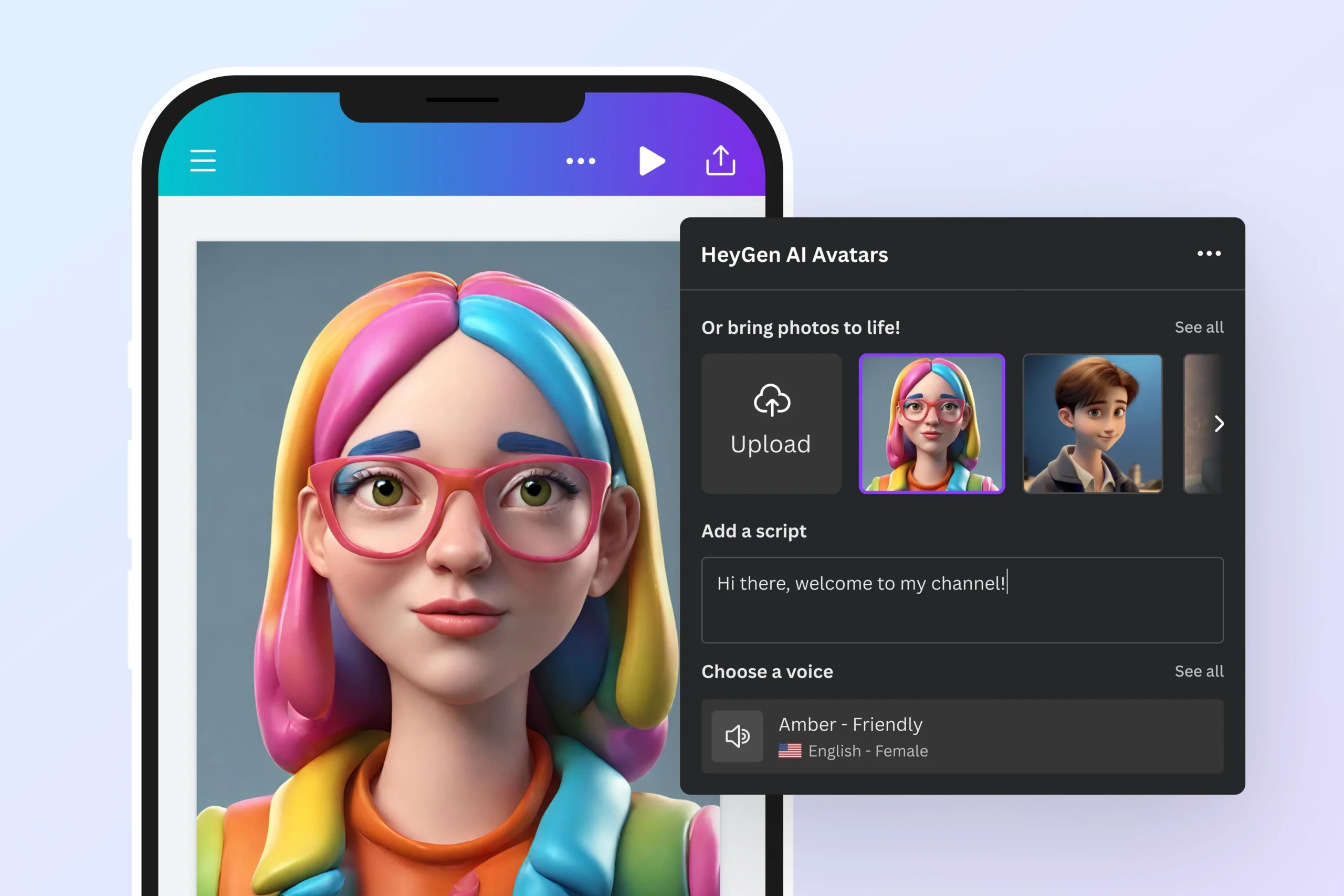Generative AI tools for beginners aren’t just hype, they’re your shortcut to creating high-quality content without the burnout.
Drowning in the content creation cycle? Whether you’re a solopreneur juggling endless tasks, a student buried in assignments, or a side hustler building a brand from scratch, keeping up with fresh content feels impossible.
But here’s a game changer: Imagine having a smart creative partner ready to help brainstorm ideas, draft text, generate unique images, or even outline simple videos. That’s the power modern generative AI tools put within your reach.
You’ve probably heard the buzzwords: AI, ChatGPT, machine learning. It might sound complex, but the truth is, harnessing the power of AI for your content is more accessible than ever. Forget needing a computer science degree; many tools are designed specifically for people like you.
This guide cuts through the noise. We’ll show you exactly what generative AI is (in plain English!), introduce the best and easiest tools to start with, and give you practical steps to begin using them today. Ready to work smarter? Let’s dive in.
What Exactly is Generative AI? (The Simple Version)
Imagine Generative AI as a creative apprentice who’s studied millions of books, paintings, and songs. It analyzes all this data to learn patterns: how sentences flow, what makes an image striking, or why certain melodies stick in your head. When you give it a prompt, it mixes and matches these patterns to create something fresh that matches your request.
It’s not magic, but it feels magical sometimes. Instead of just analyzing data, it creates.
What Kind of Content Can It Create
- Text: Blog post outlines, drafts, social media captions, email responses, headlines, ad copy, product descriptions, summaries, creative writing, code snippets.
- Images: Unique graphics, illustrations, photos based on text descriptions, variations of existing images.
- Video: Simple explainer videos, social media clips from text prompts, automated editing tasks.
- Audio: Music tracks, voiceovers (though text, image, and video are most common for content creators starting out).
The key takeaway? Generative AI acts as a powerful collaborator, helping you overcome creative blocks and speed up your workflow significantly.
Best Generative AI Tools for Beginners (Tried & Tested)
Let’s get practical. Not all AI tools are created equal, especially when you’re just starting. Here are some top picks known for their ease of use and excellent results for common content needs:
1. AI Writing Assistants

- ChatGPT (from OpenAI)
- What it is: The superstar chatbot that brought generative AI mainstream. It’s incredibly versatile for text generation.
- Ideal Use Cases: Brainstorming ideas, drafting blog posts or sections, writing emails, summarizing text, answering questions, generating social media updates, simple coding help.
- Beginner Friendliness: Very high. Simple chat interface. Has a generous free tier.
- Visit ChatGPT
- Jasper (formerly Jarvis)
- What it is: A premium AI writing assistant focused heavily on marketing and business content. Known for high-quality output and useful templates.
- Ideal Use Cases: Blog posts, marketing copy (ads, emails, landing pages), social media campaigns, product descriptions. Excellent brand voice features.
- Beginner Friendliness: High. Well-structured interface and lots of guidance. Paid tool, but offers a trial.
- Visit Jasper
- Copy.ai
- What it is: Another strong contender known for its vast library of pre-built templates for specific tasks (like writing headlines, social posts, or sales copy).
- Ideal Use Cases: Quickly generating short-form content, finding inspiration with templates, writing sales emails, website copy.
- Beginner Friendliness: Very high. Template-driven approach makes it easy to start. Offers a free plan.
- Visit Copy.ai
2. AI Image Generators for Beginners

- Canva Magic Studio (including Magic Write & Magic Media)
- What it is: Canva, the go-to graphic design tool for non-designers, has integrated AI features (“Magic Studio”) directly into its platform. Magic Media generates images from text prompts.
- Ideal Use Cases: Creating custom blog post images, social media graphics, presentation visuals without searching stock photos. Seamlessly integrates with your Canva designs.
- Beginner Friendliness: Extremely high. Integrated within the familiar Canva interface. Many features available on the free Canva plan.
- Visit Canva
- DALL·E 2 / DALL·E 3 (from OpenAI, often accessed via ChatGPT Plus or Microsoft Copilot/Designer)
- What it is: One of the pioneering high-quality text-to-image generators from the creators of ChatGPT. Known for creativity and interpreting complex prompts.
- Ideal Use Cases: Generating unique artistic images, illustrations, photorealistic scenes when you need something highly specific.
- Beginner Friendliness: Medium. Prompting requires a bit more practice for best results. Often accessed through other platforms now (like ChatGPT Plus or Microsoft Designer which has a free tier).
- Learn about DALL·E 3 on OpenAI
3. AI Video Tools:

- CapCut (from ByteDance)
- What it is: A hugely popular mobile and desktop video editor (from the makers of TikTok) packed with easy-to-use AI features.
- Ideal Use Cases: Creating short-form videos (Reels, TikToks, Shorts), auto-generating captions, removing backgrounds, applying AI effects and filters. Excellent for quick social video.
- Beginner Friendliness: Very high. Intuitive interface, especially on mobile. Powerful free versionavailable.
- Visit CapCut
- InVideo (AI)
- What it is: A browser-based video creation platform with strong AI features, including text-to-video where it creates scenes based on your script.
- Ideal Use Cases: Turning blog posts into videos, creating simple explainer videos, promo videos using stock footage combined with AI generation. Template-heavy.
- Beginner Friendliness: High. Lots of templates guide the process. Offers a free plan with watermarks.
- Visit InVideo
How to Use These Tools: A Simple Step-by-Step Workflow
Okay, you’ve seen the tools. But how do you actually use them without getting lost? Here’s a basic process that applies to most generative AI tools:
- Define Your Goal: What do you need to create? Be specific. (e.g., “I need three Twitter post ideas about my new ebook,” “I need a draft for the intro section of my blog post about gardening tips,” “I need an image of a cat wearing a tiny hat”).
- Choose the Right Tool: Based on your goal, pick the appropriate tool. Writing task? Try ChatGPT or Copy.ai. Need an image? Head to Canva Magic Media. Video clip? CapCut might be best.
- Craft Your Prompt: This is key! Your prompt is your instruction to the AI. Be clear, concise, and provide context.
- Good Prompt Example (Writing): “Write three engaging Twitter post ideas for beginners about the benefits of using generative AI tools for content creation. Include a relevant hashtag.”
- Good Prompt Example (Image): “Create a bright, cartoon-style image of a friendly robot helping a person write at a desk.”
- Bad Prompt Example: “Write an essay about AI” (Too vague!)
- Pro Tip: Experiment! If you don’t get what you want, rephrase your prompt. Add details about tone (e.g., “write in a friendly, conversational tone”), target audience, or desired format.
- Generate! Hit the button and let the AI do its work. This usually takes a few seconds to a minute.
- Review and Refine:Crucially, never use the AI output blindly. Read it, look at it, watch it.
- Is it accurate? (Fact-check!)
- Does it sound like you/your brand?
- Is it well-written/visually appealing?
- Does it meet your original goal?
- Edit, tweak, and regenerate parts if needed. Add your own insights, examples, and personality. For images, you might adjust prompts or generate variations.
- Use Your Output: Once you’re happy with the refined content, integrate it into your project!
Oops! Common Beginner Mistakes to Avoid
Using AI tools is easy to start, but watch out for these common pitfalls:
- Vague Prompts: Garbage in, garbage out. If your instructions are unclear, the results will be mediocre or irrelevant. Fix: Be specific!
- Blindly Trusting Output: AI makes mistakes! It can invent facts (“hallucinate”), write awkwardly, or misinterpret your request. Fix: Always review, edit, and fact-check.
- Ignoring Your Own Voice: Relying too heavily on AI can make your content sound generic. Fix: Edit the output to add your unique perspective, anecdotes, and style.
- Expecting Perfection Instantly: Sometimes, the first output isn’t quite right. Fix: Treat it as a draft. Refine your prompt and regenerate, or edit the output heavily.
- Forgetting Ethical Considerations: Using AI comes with responsibility (more on this next!). Fix: Be mindful of transparency, bias, and originality.
Ethical Considerations: Using AI Responsibly
Generative AI is powerful, but use it wisely and ethically:
- Fact-Check Everything: AI doesn’t “know” things; it predicts text based on patterns. It can present false information confidently. Always verify critical facts from reliable sources.
- Be Transparent (When Appropriate): While not always necessary for every piece of AI-assisted content, consider disclosing AI use if it forms the substantial core of the work, especially in academic or journalistic contexts. Policies are evolving here.
- Avoid Plagiarism: While AI generates new content, it learned from existing data. Ensure your final output is sufficiently original and doesn’t inadvertently copy protected sources. Use plagiarism checkers if needed.
- Add Your Unique Value: Don’t just copy-paste. Use AI as a starting point or assistant. Infuse your own expertise, opinions, and human touch to make the content truly yours.
- Be Aware of Bias: AI models learn from data that reflects real-world biases. Be critical of the output and edit to ensure fairness and inclusivity.
- Respect Copyright and Privacy: Don’t use AI to generate content that infringes on copyright or uses private information without permission.
Real-World Use Cases: How You Can Use AI Today
Let’s make this concrete. How can generative AI tools help you specifically?
- For the Solopreneur:
- Problem: No time for marketing content.
- AI Solution: Use ChatGPT to brainstorm blog topics and outline posts. Use Jasper or Copy.ai to draft social media updates and email newsletters. Use Canva Magic Media to quickly create unique blog headers or social post images.
- Result: Consistent online presence with less time investment.
- For the Student:
- Problem: Stuck on essay ideas or need to understand complex topics.
- AI Solution: Use ChatGPT to explain concepts in simple terms, brainstorm arguments for an essay (not write it for you!), or summarize long research papers. Use Canva to generate visuals for presentations.
- Result: Better understanding, overcome writer’s block, more engaging presentations.
- For the Side Hustler / Small Business Owner:
- Problem: Need product descriptions, basic website copy, or customer service replies.
- AI Solution: Use Copy.ai’s templates for product descriptions or website headlines. Use ChatGPT to draft polite and helpful customer service email templates. Use CapCut to create a short promo video for social media.
- Result: Professional-looking content and faster customer communication without hiring specialists initially.
Quick Comparison: Top Generative AI Tools for Beginners
| Tool | Primary Use | Ease of Use (1-5) | Key Feature | Pricing |
| ChatGPT | Versatile Writing | 5 | Conversational interface, versatile | Free Tier / Paid Plus |
| Jasper | Marketing Copy | 4 | High-quality output, templates | Paid (Trial avail.) |
| Copy.ai | Short Copy/Ideas | 5 | Template library, easy interface | Free Plan / Paid Pro |
| Canva Magic | Image Generation | 5 | Integrated in Canva, easy UI | Free Tier / Paid Pro |
| DALLE3 | Creative Images | 4 | High creativity (via other tools) | Often via Paid plans |
| CapCut | Short Video/Edits | 5 | Mobile-friendly, AI effects | Free Version / Paid Pro |
| InVideo AI | Text-to-Video | 4 | Template-based video creation | Free Plan / Paid |
Surprising Facts & Unique Tips
- Stat: Some studies suggest AI tools can help reduce content creation time by 30-50% for certain tasks! (Source: Bain & Company).
- Fact: Many AI tools allow you to specify the tone (e.g., “professional,” “witty,” “casual”) for more customized output.
- Unique Tip #1: Combine Tools! Use ChatGPT to generate a video script, then plug that script into InVideo AI to create the video, and finally use Canva Magic Media to make a custom thumbnail.
- Unique Tip #2: Build a Prompt Library. When you find a prompt structure that works well for a specific task (like writing blog intros), save it! Reuse and tweak it later.
- Unique Tip #3: Use AI for the ‘Ugh’ Tasks. Don’t love writing meta descriptions? Need to reformat notes? Let AI handle the tedious parts so you can focus on creativity.
Frequently Asked Questions (FAQ)
What is the easiest AI tool to use for content?
For absolute beginners, Canva Magic Studio (for images/design) and ChatGPT (for versatile text tasks) are often considered the easiest to start with due to their intuitive interfaces and clear functions. Copy.ai is also very beginner-friendly with its templates.
Can beginners use generative AI effectively?
Yes! Many generative AI tools for beginners include built-in templates. The key is to start simple, use beginner-friendly tools (like the ones listed here), focus on clear prompts, and always review and edit the output. Think of it as an assistant, not a replacement for your own thinking.
What are the best free AI tools for writing assistance?
ChatGPT’s free tier is incredibly powerful and versatile for various writing tasks. Copy.ai’s free plan is great for accessing templates for specific formats. Google’s Gemini (formerly Bard) is another strong free option to explore. Canva’s free tier also includes Magic Write for text assistance within designs.
Is generative AI hard to learn from scratch?
Basic usage of tools like ChatGPT or Canva Magic is not hard to learn. You can get started in minutes. Mastering advanced prompting techniques takes practice, but you don’t need that level to get significant value as a beginner. Start with simple requests and gradually experiment.
What tasks can generative AI help beginners with?
Beginners can easily use AI for: brainstorming ideas (blog posts, social media), outlining content, drafting initial text (emails, descriptions), creating simple custom images, generating captions for videos, summarizing information, and overcoming writer’s block.
Ready to Create Smarter, Not Harder?
You now have a solid understanding of what generative AI tools for beginners are, which ones to try first, and how to use them effectively and ethically. The power to break through creative barriers and streamline your content creation is literally at your fingertips.
Don’t be intimidated! The best way to learn is by doing. Pick one tool from the list that resonates with your needs: maybe ChatGPT for writing help or Canva Magic Media for images. Try generating something small today. Experiment with prompts, see what happens, and remember to add your unique human touch.
Your Next Steps:
- Explore More Tools: Check out our curated AI Tools & Software Page for more options as you grow.
- Learn More About Us: Read our full introduction to ToolSuite and our mission
Now go create something amazing! Which generative AI tool will you try first?



